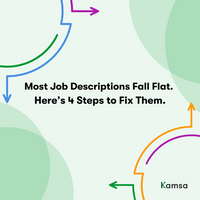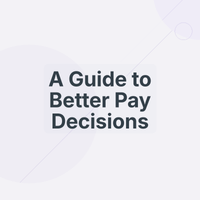
Most Job Descriptions Fall Flat - Here are 4 Steps to Fix Them
Too often, job descriptions focus on long lists of tasks with vague expectations, failing to capture the interest of top talent.
The solution? These actionable steps can help companies create job descriptions that not only align with business needs but also become a powerful tool for attracting top talent.
Step 1: Clear Role Summary
Begin with a brief, enticing role summary that highlights what makes the position unique and why someone would be excited to join the team.
Focus on the value this role brings to the company and avoid technical or internal nomenclature.
Here’s a quick prompt you could enter in an AI chatbot to get you started:
Prompt: “Describe this role in 2-3 sentences, focusing on how it contributes to our mission and what makes it special.”
Example: “As a Product Manager, you’ll drive product strategy for [company’s innovative product line], helping to shape the future of [industry impact & vision]. Join a forward-thinking mission-driven team that values creativity and impact.”
Step 2: Specific Responsibilities
Most job descriptions list tasks that are too generic and often interchangeable across roles.
The key is to clarify exactly what the person will do daily and the** impact** they will have. This way, candidates understand what to expect and can gauge whether they’re a good fit.
Prompt: “List the top 5 responsibilities for this role, focusing on tasks that are unique to this position and have a direct impact on company goals.”
Example:
- Lead and execute product launches to enhance user engagement by 25%.
- Partner with engineering and design teams to develop at least two new features each year, from concept to on-time deployment.
- Analyze user data to prioritize new features based on customer needs and feedback in order to improve customer retention rate by at least 5% within a year.
Step 3: Must-Have vs. Nice-to-Have Skills
A long list of requirements can be off-putting, especially if many of them aren’t essential.
Instead, clearly separate “must-have” qualifications from “nice-to-haves” to set realistic expectations and attract a more diverse pool of candidates.
Be sure to specify the minimum years of experience required for the role, since it clarify the job level and its associated business needs.
Prompt: “Identify the top 3 skills or experiences essential for success in this role, and then list up to 3 preferred but optional skills.”
Example:
- Must-Haves: 5+ years of product management experience, a background in SaaS, and strong project management skills.
- Nice-to-Haves: Experience working with international teams, familiarity with SQL, and knowledge of Agile methodology.
Step 4: Include the Salary Range
Let candidates know the pay range upfront and use reliable market data, like Kamsa’s proprietary market compensation data, to back your salary ranges.
When companies provide a specific salary range, you’ll not only foster transparency but also increase trust and engagement with candidates.
Bonus points for tailoring the pay bands for each location you’re open to hiring in. At Kamsa, we’ve found that including specific salary ranges tailored by location improves hiring efficiency while enhancing trust.
Avoid ranges that are too wide (e.g., $80,000-$160,000) as these are unhelpful and can discourage qualified candidates. Instead, set a narrower range based on internal equity and backed by reliable market data like Kamsa's.
Posting the pay range makes closing of candidates more efficientfor everyone involved.

With these four steps, job descriptions become more than just a list of tasks and requirements; they’re not only a good workforce planning tool for HR and managers, but also for attracting the right talent and setting clear expectations from the start.
By being specific, transparent, and purposeful, you’ll help candidates understand not just what they’ll do, but why they’ll want to do it with your team!
How Kamsa Can Help
Kamsa’s hybrid compensation software + consulting services streamline the process of creating effective compensation programs. We provide global market data, establish & manage pay bands, and provide expert guidance to fairly compensate top talent.


